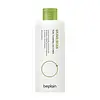What's inside
What's inside
 Key Ingredients
Key Ingredients

 Benefits
Benefits

 Concerns
Concerns

No concerns
 Ingredients Side-by-side
Ingredients Side-by-side

Water
Skin ConditioningButylene Glycol
HumectantDipropylene Glycol
Humectant1,2-Hexanediol
Skin ConditioningGlycerin
HumectantBetaine
HumectantAllantoin
Skin ConditioningPanthenol
Skin ConditioningPortulaca Oleracea Extract
Skin ConditioningTrehalose
HumectantSodium Hyaluronate
HumectantHydrolyzed Hyaluronic Acid
HumectantSodium Hyaluronate Crosspolymer
HumectantHydrolyzed Sodium Hyaluronate
Skin ConditioningSodium Acetylated Hyaluronate
Humectant2,3-Butanediol
HumectantPentylene Glycol
Skin ConditioningMalachite Extract
AntioxidantDisodium EDTA
Ethylhexylglycerin
Skin ConditioningWater, Butylene Glycol, Dipropylene Glycol, 1,2-Hexanediol, Glycerin, Betaine, Allantoin, Panthenol, Portulaca Oleracea Extract, Trehalose, Sodium Hyaluronate, Hydrolyzed Hyaluronic Acid, Sodium Hyaluronate Crosspolymer, Hydrolyzed Sodium Hyaluronate, Sodium Acetylated Hyaluronate, 2,3-Butanediol, Pentylene Glycol, Malachite Extract, Disodium EDTA, Ethylhexylglycerin
Water
Skin ConditioningGlycerin
HumectantButylene Glycol
Humectant1,2-Hexanediol
Skin ConditioningSorbitol
HumectantHydroxyacetophenone
AntioxidantPropanediol
SolventGlycereth-25 PCA Isostearate
EmulsifyingEthylhexylglycerin
Skin ConditioningSodium Citrate
BufferingCitric Acid
BufferingDisodium EDTA
Methyl Diisopropyl Propionamide
MaskingVigna Radiata Seed Extract
Skin ConditioningXanthan Gum
EmulsifyingHyaluronic Acid
HumectantHydrolyzed Hyaluronic Acid
HumectantSodium Hyaluronate
HumectantCapryloyl Salicylic Acid
ExfoliatingGluconolactone
Skin ConditioningPhaseolus Radiatus Seed Extract
Skin ConditioningGlucose
HumectantMalus Domestica Fruit Extract
AntioxidantCastanea Crenata Shell Extract
Skin ConditioningDiospyros Kaki Leaf Extract
Skin ProtectingPapain
Skin ConditioningBrassica Campestris Sprout Extract
HumectantBrassica Oleracea Gemmifera Extract
AstringentHelianthus Annuus Sprout Extract
Skin ConditioningPhaseolus Radiatus Sprout Extract
HumectantTriticum Vulgare Sprout Extract
Skin ConditioningAcetyl Hexapeptide-8
HumectantCopper Tripeptide-1
Skin ConditioningDipeptide Diaminobutyroyl Benzylamide Diacetate
Skin ConditioningHexapeptide-9
Skin ConditioningNonapeptide-1
Skin ConditioningPalmitoyl Hexapeptide-12
Skin ConditioningPalmitoyl Pentapeptide-4
Skin ConditioningPalmitoyl Tetrapeptide-7
Skin ConditioningPalmitoyl Tripeptide-1
Skin ConditioningPalmitoyl Tripeptide-5
Skin ConditioningPentapeptide-3
Skin ConditioningTripeptide-1
Skin ConditioningWater, Glycerin, Butylene Glycol, 1,2-Hexanediol, Sorbitol, Hydroxyacetophenone, Propanediol, Glycereth-25 PCA Isostearate, Ethylhexylglycerin, Sodium Citrate, Citric Acid, Disodium EDTA, Methyl Diisopropyl Propionamide, Vigna Radiata Seed Extract, Xanthan Gum, Hyaluronic Acid, Hydrolyzed Hyaluronic Acid, Sodium Hyaluronate, Capryloyl Salicylic Acid, Gluconolactone, Phaseolus Radiatus Seed Extract, Glucose, Malus Domestica Fruit Extract, Castanea Crenata Shell Extract, Diospyros Kaki Leaf Extract, Papain, Brassica Campestris Sprout Extract, Brassica Oleracea Gemmifera Extract, Helianthus Annuus Sprout Extract, Phaseolus Radiatus Sprout Extract, Triticum Vulgare Sprout Extract, Acetyl Hexapeptide-8, Copper Tripeptide-1, Dipeptide Diaminobutyroyl Benzylamide Diacetate, Hexapeptide-9, Nonapeptide-1, Palmitoyl Hexapeptide-12, Palmitoyl Pentapeptide-4, Palmitoyl Tetrapeptide-7, Palmitoyl Tripeptide-1, Palmitoyl Tripeptide-5, Pentapeptide-3, Tripeptide-1
 Reviews
Reviews

Ingredients Explained
These ingredients are found in both products.
Ingredients higher up in an ingredient list are typically present in a larger amount.
1,2-Hexanediol is a synthetic liquid and another multi-functional powerhouse.
It is a:
- Humectant, drawing moisture into the skin
- Emollient, helping to soften skin
- Solvent, dispersing and stabilizing formulas
- Preservative booster, enhancing the antimicrobial activity of other preservatives
Butylene Glycol (or BG) is used within cosmetic products for a few different reasons:
Overall, Butylene Glycol is a safe and well-rounded ingredient that works well with other ingredients.
Though this ingredient works well with most skin types, some people with sensitive skin may experience a reaction such as allergic rashes, closed comedones, or itchiness.
Learn more about Butylene GlycolDisodium EDTA plays a role in making products more stable by aiding other preservatives.
It is a chelating agent, meaning it neutralizes metal ions that may be found in a product.
Disodium EDTA is a salt of edetic acid and is found to be safe in cosmetic ingredients.
Learn more about Disodium EDTAEthylhexylglycerin (we can't pronounce this either) is commonly used as a preservative and skin softener. It is derived from glyceryl.
You might see Ethylhexylglycerin often paired with other preservatives such as phenoxyethanol. Ethylhexylglycerin has been found to increase the effectiveness of these other preservatives.
Glycerin is already naturally found in your skin. It helps moisturize and protect your skin.
A study from 2016 found glycerin to be more effective as a humectant than AHAs and hyaluronic acid.
As a humectant, it helps the skin stay hydrated by pulling moisture to your skin. The low molecular weight of glycerin allows it to pull moisture into the deeper layers of your skin.
Hydrated skin improves your skin barrier; Your skin barrier helps protect against irritants and bacteria.
Glycerin has also been found to have antimicrobial and antiviral properties. Due to these properties, glycerin is often used in wound and burn treatments.
In cosmetics, glycerin is usually derived from plants such as soybean or palm. However, it can also be sourced from animals, such as tallow or animal fat.
This ingredient is organic, colorless, odorless, and non-toxic.
Glycerin is the name for this ingredient in American English. British English uses Glycerol/Glycerine.
Learn more about GlycerinHydrolyzed Hyaluronic Acid is a form of hyaluronic acid. It is created by the hydrolysis of hyaluronic acid with a high molecular weight. Once created, Hydrolyzed Hyaluronic Acid has a low molecular weight.
Low molecular weight HA has been shown to hydrate and increase elasticity of the skin. Increasing elasticity is also associated with reduction of wrinkle depth.
One study found topical low molecular weight hyaluronic acid may be considered for the treatment of rosacea in the adult population. However, we always recommend speaking with a professional about your skin concerns.
Hyaluronic acids are a humectant. This means they draw moisture from the air. Hyaluronic acids help moisturize, soothe, and protect the skin.
Read more about other common forms of hyaluronic acid:
Learn more about Hydrolyzed Hyaluronic AcidSodium Hyaluronate is hyaluronic acid's salt form. It is commonly derived from the sodium salt of hyaluronic acid.
Like hyaluronic acid, it is great at holding water and acts as a humectant. This makes it a great skin hydrating ingredient.
Sodium Hyaluronate is naturally occurring in our bodies and is mostly found in eye fluid and joints.
These are some other common types of Hyaluronic Acid:
Learn more about Sodium HyaluronateWater. It's the most common cosmetic ingredient of all. You'll usually see it at the top of ingredient lists, meaning that it makes up the largest part of the product.
So why is it so popular? Water most often acts as a solvent - this means that it helps dissolve other ingredients into the formulation.
You'll also recognize water as that liquid we all need to stay alive. If you see this, drink a glass of water. Stay hydrated!
Learn more about Water